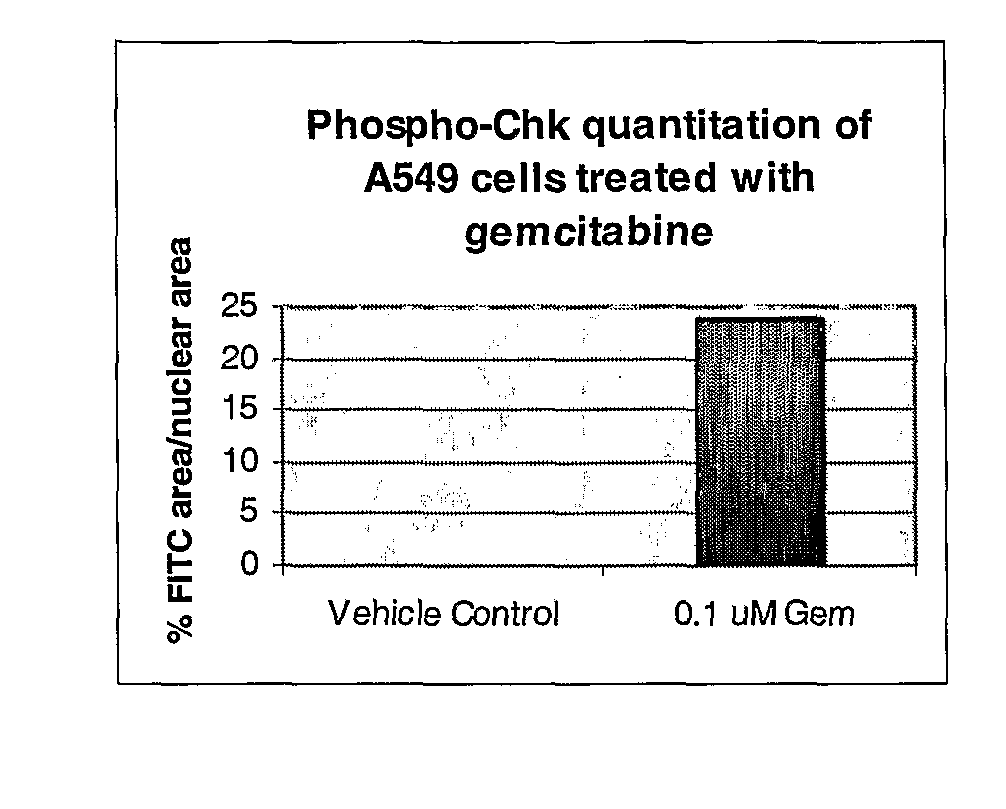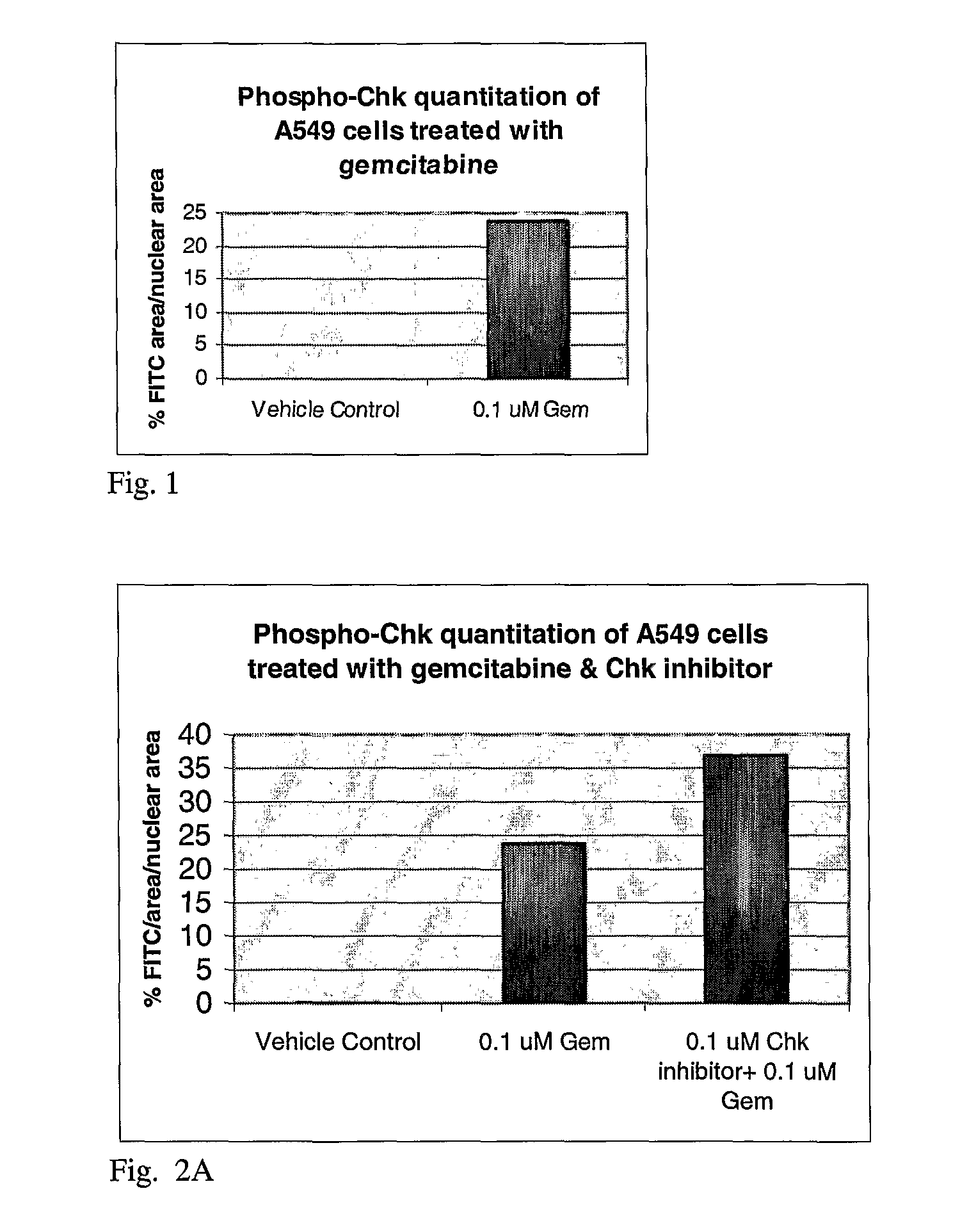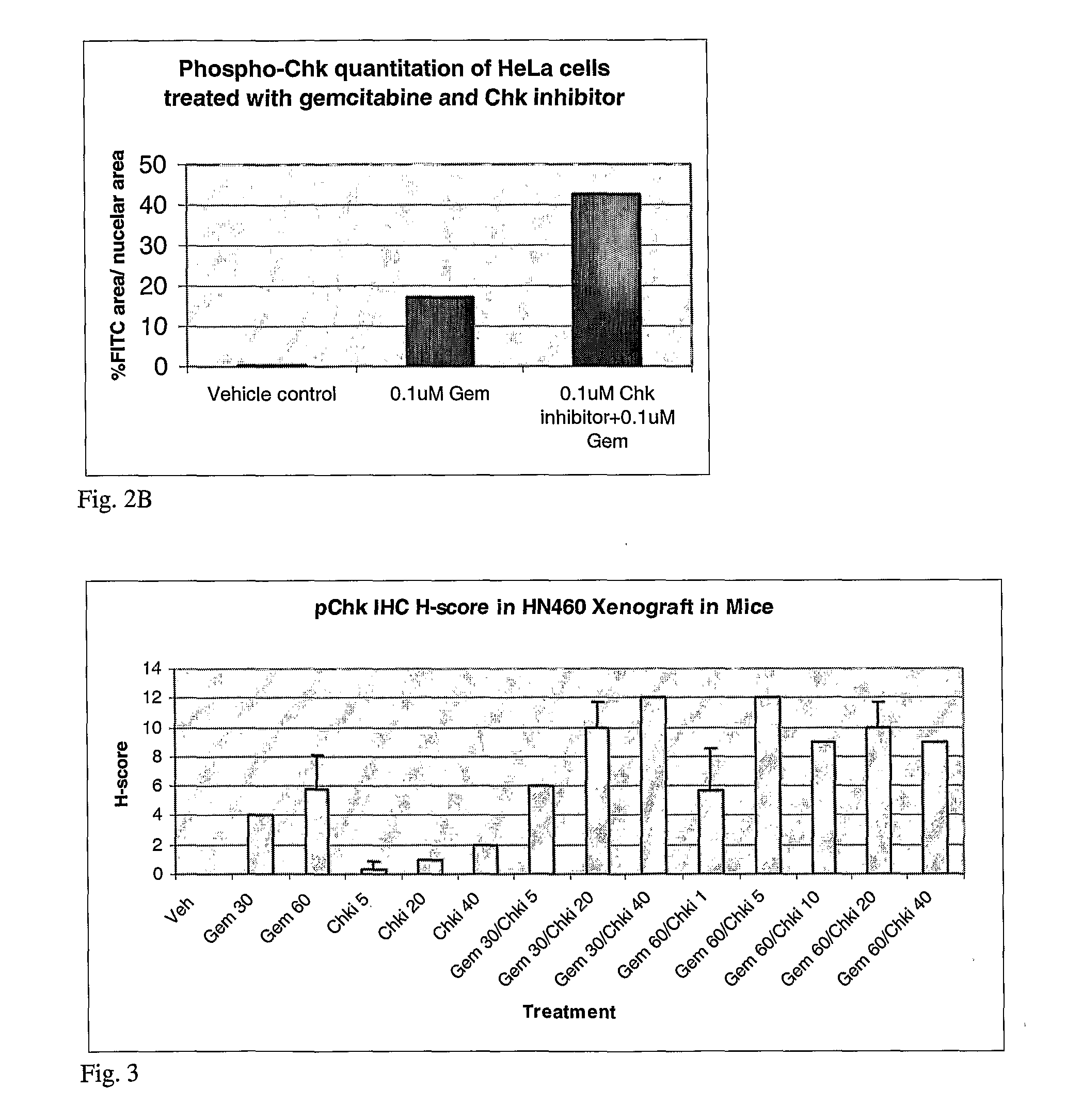Method for Determining Responsiveness to Chk1 Inhibitors
a technology of chk1 inhibitor and responsiveness, applied in the field of determining responsiveness to chk1 inhibitor, can solve the problem of severely limited use of both approaches
- Summary
- Abstract
- Description
- Claims
- Application Information
AI Technical Summary
Benefits of technology
Problems solved by technology
Method used
Image
Examples
example 1
Demonstration of Activation of CHK1 following DNA Damage in Tumor Cell LineS, and Xenograft Samples
[0055]A. In vitro Studies:
[0056]In brief, 3×106 SW620 and or HT29 cells were plated into 10 cm tissue culture dishes and allowed to adhere for 24 hours at 37° C. Cell were then treated with a titration of DNA damaging agents (SN-38 (CQ International, China), doxorubicin (Sigma-Aldrich, MO) or gemcitabine (CQ International, China)). Cells were then harvested after an 8 hour incubation with DNA damaging agents in Onyx lysis buffer with protease and phosphatase inhibitors (20 mM Tris, 137 mM Na Cl, 1 nm EGTA, 1% Triton X, 10% glycerol, 1.5 mM MgCl2, 1:100 dilution of Calbiochem Phophatase Inhibitor Cocktail set II, 10 mM β-glycerophosphate, 1 mM DTT, 7 μg / ml PMSF, 20KIU / ml aprotinin, 1 mM Pefabloc, 0.1 mg / ml leupeptin). Protein lysates were then generated, protein concentration determined and equal protein loaded and analyzed by Western blot analysis using a 1:100 dilution of phospho-CHK ...
example 2
Demonstration of Increased Phospho-CHK Following Combination Treatment of Gemcitabine and CHK1 inhtibitor in Tumor Cell Lines, Xenograft Samples and Surrogate Tissues
[0060]A. In vitro Studies
[0061]In brief, 3×106 SW620 were plated into 10 cm tissue culture dishes and allowed to adhere for 24 hours at 37° C. Cell were then treated with 100 nM gemcitabine or 30 nM, 100 nM or 500 nM CHK inhibitor or a combination of 100 nM gemcitabine and 30 nM, 100 nM or 500 nM for 8 hours. One set of cells were then harvested for Western blot analysis. Media containing compounds were removed from the remaining cells and fresh tissue culture media added back. Cells were then harvested 22 hours later, protein lysates generated as described above and analyzed by Western blot analysis using the phosphor-CHK antibody. Western blot analysis demonstrated an increase in phospho-CHK following gemcitabine treatment alone and a dose dependent increase over gemcitabine alone in phospho-CHK following the combinat...
example 3
Demonstration of Decreased DNA Damage Foci Following Inhibition of CHK1 Kinase
[0068]A. In vitro Studies:
[0069]HeLa cells were plated on cover slips and allowed to adhere for 24 hours at 37° C. Cells were then treated for 5 hours with 100 nM Adriamycin™ and 500 nM CHK inhibitor. Cells were then treated as described in Example 1. Primary antibody used for the studies was a 1:120 dilution of rabbit polyclonal anti-53BP1 (Novus, CO) and secondary antibody was a 1:300 dilution of Alexa Fluor 488 anti-rabbit IgG (Molecular Probes, OR). Foci were quantiatated by measuring fluorescent intensity per number of nuclei (determined by Hoescht staining) using Metaphorph analysis. FIG. 5 demonstrates a decrease in the fluorescent intensity when CHK inhibitor is combined with Doxorubicin hydrochloride (Adriamycin™).
PUM
| Property | Measurement | Unit |
|---|---|---|
| time | aaaaa | aaaaa |
| pH | aaaaa | aaaaa |
| tumor cell resistance | aaaaa | aaaaa |
Abstract
Description
Claims
Application Information
 Login to View More
Login to View More - R&D
- Intellectual Property
- Life Sciences
- Materials
- Tech Scout
- Unparalleled Data Quality
- Higher Quality Content
- 60% Fewer Hallucinations
Browse by: Latest US Patents, China's latest patents, Technical Efficacy Thesaurus, Application Domain, Technology Topic, Popular Technical Reports.
© 2025 PatSnap. All rights reserved.Legal|Privacy policy|Modern Slavery Act Transparency Statement|Sitemap|About US| Contact US: help@patsnap.com



